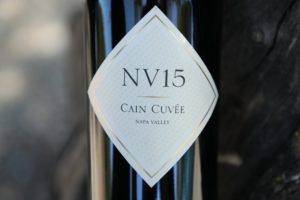

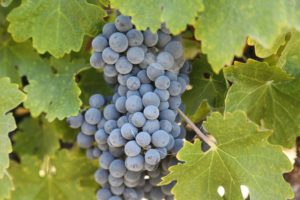 Cain Vineyard & Winery (formerly known as Cain Cellars) is located high in the forested Spring Mountain District with a somewhat isolated location away from most of the other Spring Mountain wineries. The winery was founded in 1980 by Jerry and Joyce Cain and presently produces between 10,000 and 20,000 cases per year. Their first vintage, a Sauvignon Blanc was made from purchased grapes in 1981. Lester Hardy was Cain’s winemaker during part of the 1980s (previously at Conn Creek and Chappellet). Jerry was a relator and commercial building developer based in Palm Springs (Cain Development Corp) and Joyce was a building designer. She designed the Cain Winery and hospitality center and oversaw its construction in stages during the early 1980s; the first harvest processed at Cain was in 1982 with the winery fully completed in 1986. Joyce was also an avid culinary enthusiast and for some time sold a variety of Cain jellies made from Cabernet Sauvignon and Sauvignon Blanc under the name Napa Valley Connection.
Cain Vineyard & Winery (formerly known as Cain Cellars) is located high in the forested Spring Mountain District with a somewhat isolated location away from most of the other Spring Mountain wineries. The winery was founded in 1980 by Jerry and Joyce Cain and presently produces between 10,000 and 20,000 cases per year. Their first vintage, a Sauvignon Blanc was made from purchased grapes in 1981. Lester Hardy was Cain’s winemaker during part of the 1980s (previously at Conn Creek and Chappellet). Jerry was a relator and commercial building developer based in Palm Springs (Cain Development Corp) and Joyce was a building designer. She designed the Cain Winery and hospitality center and oversaw its construction in stages during the early 1980s; the first harvest processed at Cain was in 1982 with the winery fully completed in 1986. Joyce was also an avid culinary enthusiast and for some time sold a variety of Cain jellies made from Cabernet Sauvignon and Sauvignon Blanc under the name Napa Valley Connection.
Tragically both the winery and hospitality center burned down in the 2020 Glass Fire and the vineyards sustained major damage. Both the 2019 and 2020 vintages were destroyed in the fire. In order to make part of their 2021 vintage they purchased grapes.
In the mid 1980s, friends, of the Cains, James and Nancy Meadlock (died in 2019) became partners in the winery and assumed full ownership in 1991. James and Nancy, former IBM employees, were among the several founders of M & S Computing, Inc. in 1969; their last name of Meadlock was the M in the company, which was later renamed to Intergraph Corporation in 1980. Intergraph’s primary business was developing computer chips which were used to process data into computer graphics; at one point it was the largest corporation in Alabama. After selling and becoming a privately held company in 2006, four years later in 2010 Intergraph was sold to Hexagon AB, a public information company headquartered in Stockholm, Sweden.
James Meadlock also owns Perdido Beach Resort in Orange Beach, Alabama and Voyagers Restaurant (the finest of several places to eat within the resort); Nancy was the General Manager of this resort until her passing. This property was previously known as the Perdido Hilton Hotel. We have personally stayed at Turquoise Palace, a few minutes’ walk down the beach from Perdido Beach Resort. We will visit this resort and Voyages Restaurant during our next trip to Gulf Shores and Orange Beach.
Cain Vineyard & Winery is located about 2.5 miles in on the extremely narrow sometimes one lane windy Langtry Road. Cain is not the only producer located on Langtry Road. One will pass by School House Vineyard, one of the longest continuously producing brands in all of Napa Valley, York Creek Vineyard and some of Fritz Maytag’s olive trees and the driveway for Flying Lady Winery. This road does not continue through to Sonoma County despite what online maps sometime indicate.
The winery is situated on a ridge line in the Mayacamas mountains as with other Spring Mountain hillside wineries they sometimes receive snow in the winter. The vineyards range in elevation from about 1400 to 2100 feet with these uppermost vineyards among some of the higher vineyards found in Spring Mountain. The total acreage is significant, totaling 550 of which about ninety are planted to vine. Their water source comes from the rainfall each year; two ponds on property store water for use throughout the season on the vines as needed. Springtime is a wonderful time to visit this winery as there are many picturesque flowers in bloom near the site of the original winery including dogwood, azaleas & rhododendrons.
The property used to be part of the 2,600-acre McCormick sheep and cattle ranch. Henry McCormick was born in Missouri; he crossed the country to California in 1862 and settled in Napa Valley in 1865. He married Mary Hudson, the daughter of William Hudson, an early Napa County pioneer who was associated with the Bear Flag Revolt in Sonoma in 1846.

 Henry met a tragic demise while hunting for deer on Howell Mountain in mid September 1879. According to an account detailed in The St. Helena Star dated September 19, 1879, while loading his Winchester Rifle he forgot to put the hammer down after pushing in the last cartridge. He sat down on a rock with the barrel of the gun resting against his chest. The gun suddenly fired with the bullet entering his chest and coming out his neck, narrowly missing one of the other men in the hunting party. Henry raised up suddenly, lost his balance and fell head first into rocks below where he was standing. One of the men in the group had a chance to catch him but did not.
Henry met a tragic demise while hunting for deer on Howell Mountain in mid September 1879. According to an account detailed in The St. Helena Star dated September 19, 1879, while loading his Winchester Rifle he forgot to put the hammer down after pushing in the last cartridge. He sat down on a rock with the barrel of the gun resting against his chest. The gun suddenly fired with the bullet entering his chest and coming out his neck, narrowly missing one of the other men in the hunting party. Henry raised up suddenly, lost his balance and fell head first into rocks below where he was standing. One of the men in the group had a chance to catch him but did not.
A rescue party brought Henry into town; he was in decent shape the day afterwards considering the severity of his injuries. But then his conditioned worsened quickly; he died not from his bullet wound but from an inflammation of the brain brought on by his fall. He died at age 40, leaving his wife Mary and their five children.
Henry’s son John McCormick was born on the ranch in 1871 and in later years was referred to as the, “patriarch of Spring Mountain” or simply, “mountain John”. The ranch continued to be grazed by sheep and cattle; through the 1880s bears were common on the ranch, often preying on the animals. In 1905 Henry’s widow Mary gifted the ranch to John and Alice McCormick for, “love and affection”. John served as a Napa County supervisor from 1916 until 1924; during his time in office, the highway was paved for the first time from Vallejo to Calistoga. John lived his entire life (died at 90 in 1963) on the ranch and oversaw its management; he was not the only rancher in his family; his brother Chalmers McCormick was the ranch foreman for a 2,800 property in Winnemucca, NV.
John’s daughter Ina married William Hart, the owner of Hart Haven, also on Spring Mountain and later known as Chateau Chevalier. This old chateau still stands and is currently on property owned by Spring Mountain Vineyard.
In 1952, the McCormick family were the subject of an article in PG&E, a publication printed by this utility company. In the article the McCormick’s were mentioned as, “Napa County’s friendliest family”. Sheep and cattle grazing continued on the ranch until the 1970s. The Napa Land Trust currently owns 401 acres of the original McCormick Ranch. And the Sonoma Land Trust owns approximately 650 acres of the original ranch in Sonoma County.
After the Cain’s acquired their 550 acre property from the heirs of the founders (they were only the second owners of the property) they hired noted Napa viticulture pioneer Laurie Wood to plant their vineyards to Cabernet Sauvignon, Cabernet Franc, Merlot, Petit Verdot and Malbec. Their first vines went into the ground in 1981. Unfortunately, much of these vines were planted on AxR rootstock and were not resistant to phylloxera so over time most of the vineyard has been replanted. Because of the site’s location featuring numerous contours and exposures and elevation range, harvest usually lasts from 4 to 6 weeks.
This is a scenic location with excellent views of the ridge tops and of their vineyards; some of which extend almost 1000 feet below the winery. Views are into part of the Napa Valley floor in the distance as well as into neighboring Sonoma County to the west. A prominent rock stands out by itself far below their upper vineyards; this is called La Piedra. Their vineyards are low yielding growing on very rocky shallow soils. Up to 1.5 tons / acre is a good yield. All their vineyards are certified organic. Ten vineyard workers manage the vines year-round.
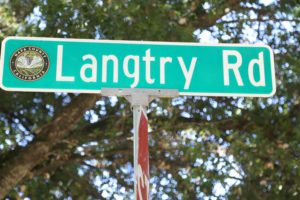
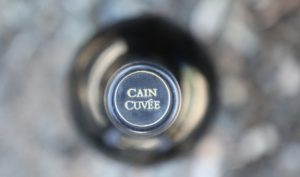 Prior to the Glass Fire, visits were by appointment for either a sit down tasting or a sit down tasting combined with a vineyard walk and a tour of their wine making facilities. Visits were private for your party and were hosted around a table small table in a very personalized setting. The tour of the winery stopped in their fermentation tank room, barrel aging room and ended in an elegant room containing several tables where guests would taste four wines. Note: once the winery is rebuilt, presumably tours and tastings will resume, and we will revisit and update this review at that time.
Prior to the Glass Fire, visits were by appointment for either a sit down tasting or a sit down tasting combined with a vineyard walk and a tour of their wine making facilities. Visits were private for your party and were hosted around a table small table in a very personalized setting. The tour of the winery stopped in their fermentation tank room, barrel aging room and ended in an elegant room containing several tables where guests would taste four wines. Note: once the winery is rebuilt, presumably tours and tastings will resume, and we will revisit and update this review at that time.
Part of the tour was about how they made their final blends, whittling down the choices from over 70 vineyard blocks to the three wines. Blending is a critical component of their wine making. There are a number of philosophies on when to blend; Cain tends to blend early allowing for maximum integration of flavors. Their flagship wine is the Cain Five which is a blend of the five classic Bordeaux varieties each of which is planted in their vineyards. This is the wine they are most known for – it has been produced since 1985 and is hand crafted down to the smallest of details. The name also ties in well based on the fact they had 5 children.
The fining of their wines is done with egg whites (generally no filtration is done to allow for maximum color and flavor) and all their wines are fermented with indigenous yeasts inherent on the skins of the grapes. All their wines are blends with the percentages listed on each bottle.
Winemaker and General Manager Chris Howell has been with Cain since 1990. Some of his former experience is formable, with time spent at Château Mouton Rothschild and much closer to Napa Valley, Peter Michael Winery in Knights Valley of neighboring Sonoma County.
We first visited Cain Cellars in the very early stages of the Napa Wine Project; we did not yet have the very unique perspective resulting from visiting and tasting with more than 1,250 unique Napa Valley based wineries and producers. Now we have a much better grasp of the various nuances of wine styles in the valley.
During a revisit we could clearly tell these are wines that are different from many of Napa’s producers, hillside or valley floor. These are wines that have their own style or “Cainess” as one of their tour guides simply stated during a long ago tour of the property. Chris calls his style of wine making as “wine beyond just the fruit”. And the proof of this is clearly in the glass.
Select Wines
Sauvignon Blanc
The 2023 Cain OTO (one time only) Sauvignon Blanc, Lyon Vineyard Alexander Valley is made from grapes from vines planted in 1973. This wine is was fermented in a combination of both 500l and 1000l ceramic jars and in fully neutral oak barrels. It is medium to deep gold in color at this age two years post vintage; rich, ripe and highly expressive in terms of its aromatics, this wine is California sunshine in a glass. No green or grassy here. It smells like golden delicious apples, quince sauce, apple sauce, baked pineapple, peach cobbler, apricot jam, alphonso mango and ripe papaya. And a non-fruited aroma, a waxy character similar to lanolin, but never crossing into the smell of saran wrap. Partially mimicking the bouquet, this wine tastes like yellow apples and quince, accompanied by additional notes of golden plums, pineapple and tangerine – a flavor that reminds us the California grown fresh tangerines that start hitting the farmers market in early winter. Its lightly fleshy and rounded texture is buoyed high by its bright and almost tangy acidity. Lingers refreshing and mouthwatering. This wine is made to enjoy with a view of a rugged northern California coastline following a stop for fresh oysters with tangy mignonette sauce at Tamales Bay Oyster Company in Marin County.
Méridional
The 2023 Cain Méridional is a blend of 48% Grenache, 27% Mourvèdre and 25% Tempranillo with 67% of the grapes from Sonoma County and 33% from Amador County. This wine is pale to medium ruby in color; bright, fresh, red fruited and with a play of dried herbs, this wine smells like raspberry, red licorice, red plums, cranberry, currant, dried rose petals, lavender and a garrigue-like character, reminding us of hiking the chaparral lined hillsides of coastal California on a warm day or more in line of the name of this wine, hiking the rugged garrigue lined slopes above the village of Maury in southwest France. For reference, the word Méridional refers to the south and can also refer to someone who lives in the south of France. Before we even go down the road of its flavor, texture and acid profile, all you need to know is this bottling will pair well with a diversity of foods. Our first thought is enjoying this with a diverse charcuterie board including an assortment of cheeses. Its flavors are primarily red fruited including of raspberry, strawberry, currant and cranberry with some savory spice notes including of white pepper and dried sage. The acidity is bright and balanced with softly dusty tannins lingering with a gentle kiss. Serve lightly chilled.
Cain Five
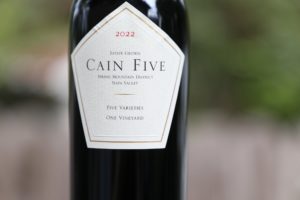
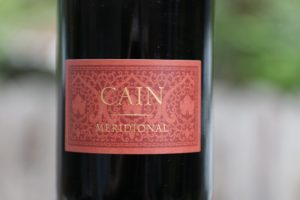
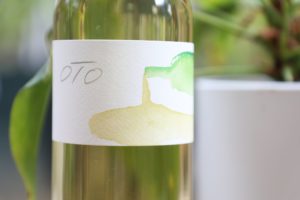 The 2022 Cain Five is a blend of 42% Cabernet Sauvignon, 24% Merlot, 16% Petit Verdot, 12% Cabernet Franc and 6% Malbec. This wine is deep ruby in color; the aromatics are fresh and bright but filled with plenty of Cain savory characteristics that regardless of vintage or where this wine is made, is the trademark of this particular bottling. This wine smells brambly and red berry fruited (cranberry, currant, red plums) with notes of damp potting soil, old cigar box, horse sweat in union with saddle leather, crushed pink pepper and assorted dried herbs including of sage. And somewhere in here as the wine evolves, is a light sweet thread of baking spices, perhaps of vanilla and cardamom. Brimming with energy from its juicy and vibrant acidity, this wine tastes higher toned and red fruited with flavors of currant, cranberry, not fully ripe boysenberry, raspberry, Persian mulberry, red plums and a note of menthol, dark pepper and smoked meats. We love its textural profile; the tannins are fully rounded with a tumbled and gravelly character; they linger with a gentle almost creamy mouth feel, broadly coating, felt across the palate. Pair with lighter cuts of beef and a BBQ.
The 2022 Cain Five is a blend of 42% Cabernet Sauvignon, 24% Merlot, 16% Petit Verdot, 12% Cabernet Franc and 6% Malbec. This wine is deep ruby in color; the aromatics are fresh and bright but filled with plenty of Cain savory characteristics that regardless of vintage or where this wine is made, is the trademark of this particular bottling. This wine smells brambly and red berry fruited (cranberry, currant, red plums) with notes of damp potting soil, old cigar box, horse sweat in union with saddle leather, crushed pink pepper and assorted dried herbs including of sage. And somewhere in here as the wine evolves, is a light sweet thread of baking spices, perhaps of vanilla and cardamom. Brimming with energy from its juicy and vibrant acidity, this wine tastes higher toned and red fruited with flavors of currant, cranberry, not fully ripe boysenberry, raspberry, Persian mulberry, red plums and a note of menthol, dark pepper and smoked meats. We love its textural profile; the tannins are fully rounded with a tumbled and gravelly character; they linger with a gentle almost creamy mouth feel, broadly coating, felt across the palate. Pair with lighter cuts of beef and a BBQ.
The 2017 Cain Five is 45% Cabernet Sauvignon, 26% Merlot, 21% Cabernet Franc, 5% Malbec and 2% Petit Verdot. This wine is deep ruby in color; the bouquet offers a barnyard like aroma, with forest floor notes, along with aromas of mushroom, pepper, beef jerky, dried herbs, bacon fat, two-day old used Band-Aid and a sweaty pitcher’s baseball mitt after coming in to rest in between innings on a hot summer day. It is a bouquet with equal parts savory, soul and dankness. While some may be turned off by the aromatics, in today’s clean contemporary Napa Valley winemaking style, Cain remains true to their vineyard and cellar approach; this wine is a perfect example of this. Medium bodied across the palate this wine features primarily red fruits including red cherry and various red berries. This wine shows good acidity but not a higher-toned tartness. The finish lingers gently with earthy and fine chalk-like tannins and some savory nuances. We recommend decanting and trying this wine over a period of an hour; it is like a shy child hiding in his room in the presence of visiting strangers for the first time, closed and turned inward until he becomes comfortable and begins to interact. Oxygen will eventually bring this wine out of its shell; be patient, it will take some time, slowly opening up even more aromatic layers including fruit.
The 2012 Cain Five is a blend of 50% Cabernet Sauvignon, 29% Merlot, 8% Cabernet Franc, 8% Petit Verdot and 5% Malbec. This wine is deep ruby in color; the bouquet offers a pleasing mix of both blackberries, a pine component and a subtle toasted cedar note interwoven on the bouquet. An earthiness (forest floor) along with mushroom aromatics both continue onto the palate. Features mouthwatering acidity. Well integrated tannins feel pleasant on the palate with a long lasting somewhat savory finish. This vintage was a break from the previous two vintages which were colder with rain falling at inopportune times, especially during 2011.
The 2007 Cain Five is a blend of 68% Cabernet Sauvignon, 16% Merlot, 6% Malbec, 5% Petit Verdot and 5% Cabernet Franc – all grapes in this vintage were grown on their estate. This wine is a perfect example of the importance of aging Cain’s wines, coupled with this being an excellent vintage. This wine, tasted 9 nears after vintage, shows harmonious notes straight out of the bottle. The fruit is lively and seems like a younger wine then in reality. The bouquet offers an elegant nose with hints of white pepper, aromas of rose petal, dark cherry and blueberry. Balanced and perhaps riper than most Cain Five vintages, the palate features long lasting somewhat chewy tannins. A crowd pleaser!
Cain Concept
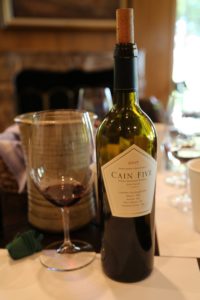
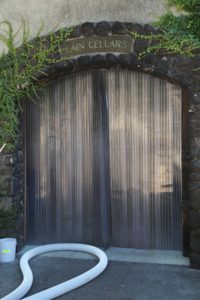 The 2012 Cain Concept, the Benchland is a blend of 73% Cabernet Sauvignon, 16% Merlot, 7% Petit Verdot and 4% Cabernet Franc from grapes grown in Rutherford, Carneros and Atlas Peak. This wine shows an earthiness mixed with a mushroom / truffle note on the bouquet – almost meaty reminding us of similar aromatics from certain Syrah’s we have tried, but this wine has no Syrah in it. The palate shows a darker grip of black fruit (blackberry, black cherry) and a dustiness along with a subtle herbal component. The mouth feel is soft and velvety; the tannins are noticeable but not gripping in feel. The Cain Concept, the Benchland always is a wine made from grapes from a diversity of premium vineyards growing in alluvial deposits or bench land soils within Napa Valley.
The 2012 Cain Concept, the Benchland is a blend of 73% Cabernet Sauvignon, 16% Merlot, 7% Petit Verdot and 4% Cabernet Franc from grapes grown in Rutherford, Carneros and Atlas Peak. This wine shows an earthiness mixed with a mushroom / truffle note on the bouquet – almost meaty reminding us of similar aromatics from certain Syrah’s we have tried, but this wine has no Syrah in it. The palate shows a darker grip of black fruit (blackberry, black cherry) and a dustiness along with a subtle herbal component. The mouth feel is soft and velvety; the tannins are noticeable but not gripping in feel. The Cain Concept, the Benchland always is a wine made from grapes from a diversity of premium vineyards growing in alluvial deposits or bench land soils within Napa Valley.
The 1999 Cain Concept is as blend of 76% Cabernet Sauvignon, 19% Cabernet Franc and 5% Syrah. This wine is deep garnet, opaque and has turned brickish in color after 26 years post vintage at the time of our needling and nosing. Even after all this time, still the nose is unmistakably Cain. Its ‘sweat’ and animalistic aromatic funk is very much present with aromas of dirty diaper, barnyard happenings including perhaps cross species sexual encounters, sweaty baseball mitt being used on a hot day, dried mushrooms, damp potting soil, and musty smelling library book. And as the wine evolves, the aromatics retain their dominance, but perhaps relent slightly and offers up some coffee like scents. Very much still brightly lit from its sporty acidity, but with its flavors having matured and become tertiary, this wine tastes like dried fruits including plum, fig, blackberry, cherry, currants and cranberries. Finishes savory and lively with notes of dried herbs including sage and bay leaf, smoked cedar and pipe tobacco. The still gravelly and lightly grainy tannins continue to push their texture, but are felt more on the front of the palate than the back at this age. Its listed ABV is remarkably low, at 12.5%.
Cain Cuvée
The very reasonably priced Cain Cuvée is always a non-vintage of two years and is bottled as NV, for non-vintage with a number representing the most recent of the two-harvests used to make this wine. This wine was first made in 1998.
The Cain NV 15 Cuvée is a blend of 45% Merlot, 19% Cabernet Sauvignon, 18% Cabernet Franc and 18% Petit Verdot from vintages 2014 and 2015. It was made with 70% grapes from Spring Mountain and 30% from the valley floor. This wine is medium to deep ruby in color with a slightly transition to a brickening color; for reference we needled and nosed this in late 2025. At this age, the bouquet has lost some of its primary scents and evolved to more tertiary; its scents include damp potting soil, sweet pipe tobacco, dried mushroom, roasted meats, old cedar box, dark raspberry, cherry and some dried notes including of raspberry and blackberry. And as the wine evolves it opens to a note of dark cocoa powder. Perfectly balanced and very much a bright expression, this wine is a union of both savory and red fruits; its flavors include raspberry, red cherry, currant, red plums and leather (although we are not in the habit of chewing on such a product). The tannins exert a moderate and long-lasting dusty/chalky grip which still far outpaces the fruit on the palate. This wine is aging gracefully and is in a sweet spot at this time.
The Cain NV12 Cuvée is a blend of the 2011 and 2012 vintages; these were dramatically different growing season. 2011 was a cold, rainy and challenging year in Napa Valley while 2012 was a more standard (warm) growing season. This wine contains 50% Merlot, 32% Cabernet Sauvignon, 10% Cabernet Franc, 4% Petit Verdot and 4% Malbec. This is a lighter styled, easy drinking wine and certainly gentle on the pocketbook. Aromatically it shows a sweaty leather/animal note to the bouquet, almost wild/gamey like. This wine needs time to breathe and as it opens this aromatic ‘mustiness’ dissipates, replaced by elegant fruit and a noticeable floral component. It is fairly soft on the palate with polished tannins, this wine drinks well young.
—
Cain holds on to their wines a couple of years longer than most Napa Valley wineries before releasing them. They also use longer premium corks and each of their bottles are laser etched with a few relevant details about the wine. All labels are still adhered with glue.
Former winery
Vineyard
In addition to primarily selling direct to consumer, Cain also is selectively distributed in Napa Valley including at Oakville Grocery and Sunshine Market in St. Helena. For more information, to schedule a virtual appointment or to sign up for their mailing list, visit: www.cainfive.com
ARCHIVED NOTES
Spring House Tasting Salon, St. Helena
After the Cain Winery and hospitality center burned down in the fires of 2020, Cain downsized and for a short while, moved their hospitality operations in the summer of 2021 to the historic Spring House in St. Helena located directly across from what was Goose and Gander restaurant until that they permanently closed in 2025. NOTE: as of our latest update, Cain Cellars is no longer hosting visitors at the Spring House salon in St. Helena – we keep our notes here for historical reference.
They occupied part of this building for only a short while. This family home has rich history; it dates from the late 1880s and was built by Battista Salmina, brother-in-law of one-time owners of Larkmead Vineyards, Felix Salmina and his family. Incidentally, Felix Salmina was one of the seven founding members of the Napa Valley Vintners in 1944. And along with Felix Salmina, Battista also helped build and operate the old wooden William Tell Hotel just down the street from the Post Parade tasting room in 1878. Remarkably this building is still standing – located at 1228 Spring Street.
The home features two other Napa based producers, Lang & Reed and The Debate – both offering tastings by appointment in one of several spaces including a shared room and a porch overlooking Spring Street. As of our latest update to this review, Cain Cellars is now producing their wines at Raymond Vineyards, but hopefully the winery and tasting room will be rebuilt in the coming years.







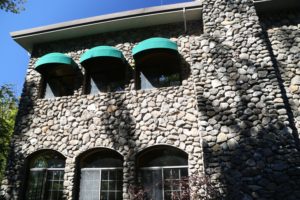
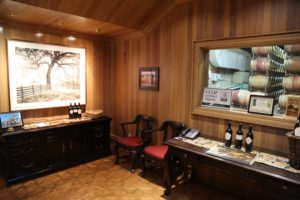
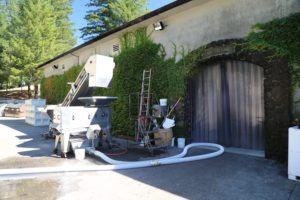
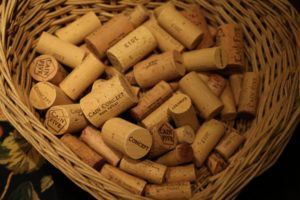

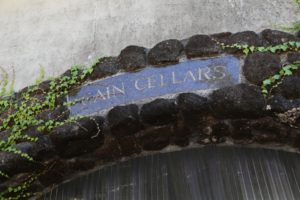

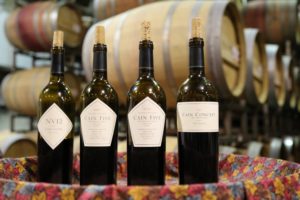
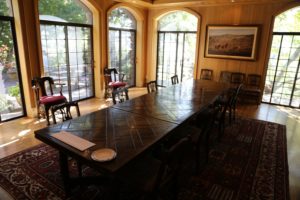

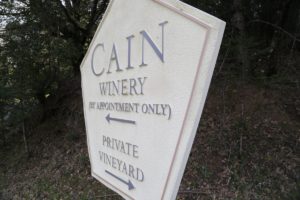
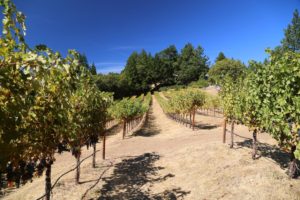
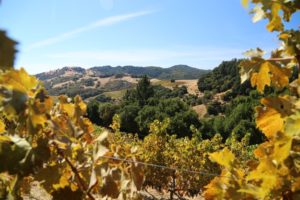
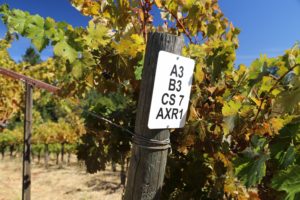


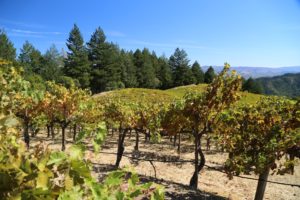



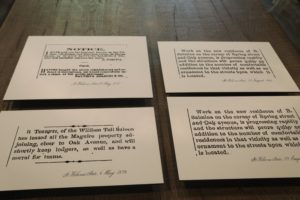
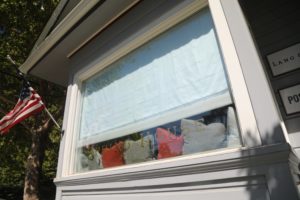


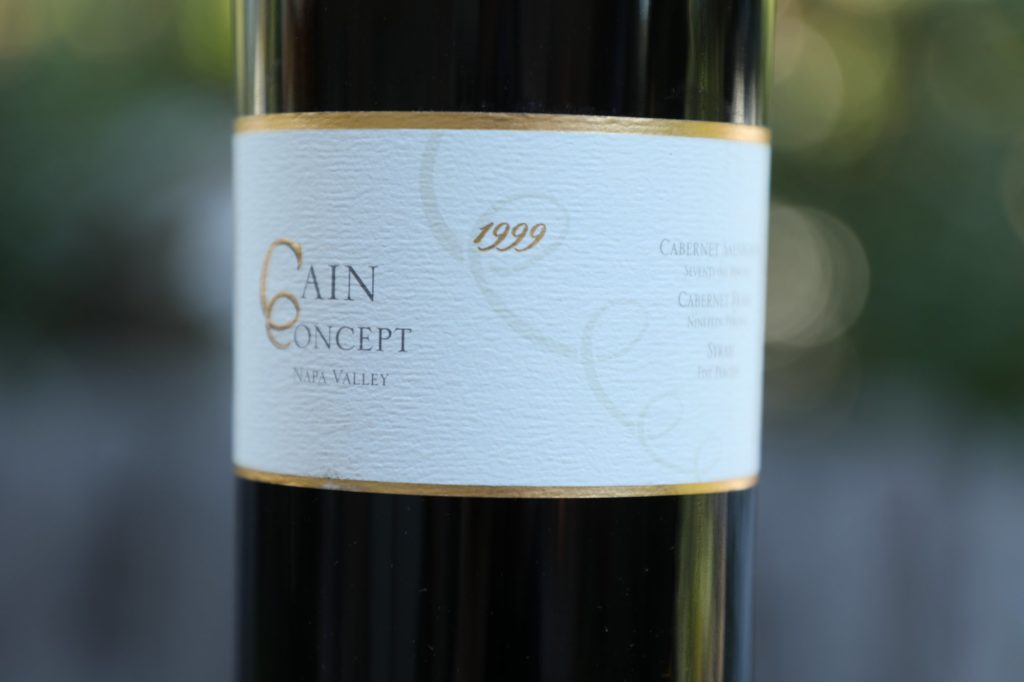
I was lucky that a friend ordered a bottle of Cain wine when dining at the Perdido Beach Resort in Orange Beach, AL. It was outstanding. Any time we’re near Alabama’s gulf coast, we always go back to that resort and purchase a few bottles. Good stuff…good stuff indeed.
Orange Beach – I was last there when I took a trip out to Gulf Shores. Miss that part of the state. Glad you discovered some of the Cain wines 🙂
Just heard about the damage here from the Glass Fire – this continues to be gut wrenching 🙁